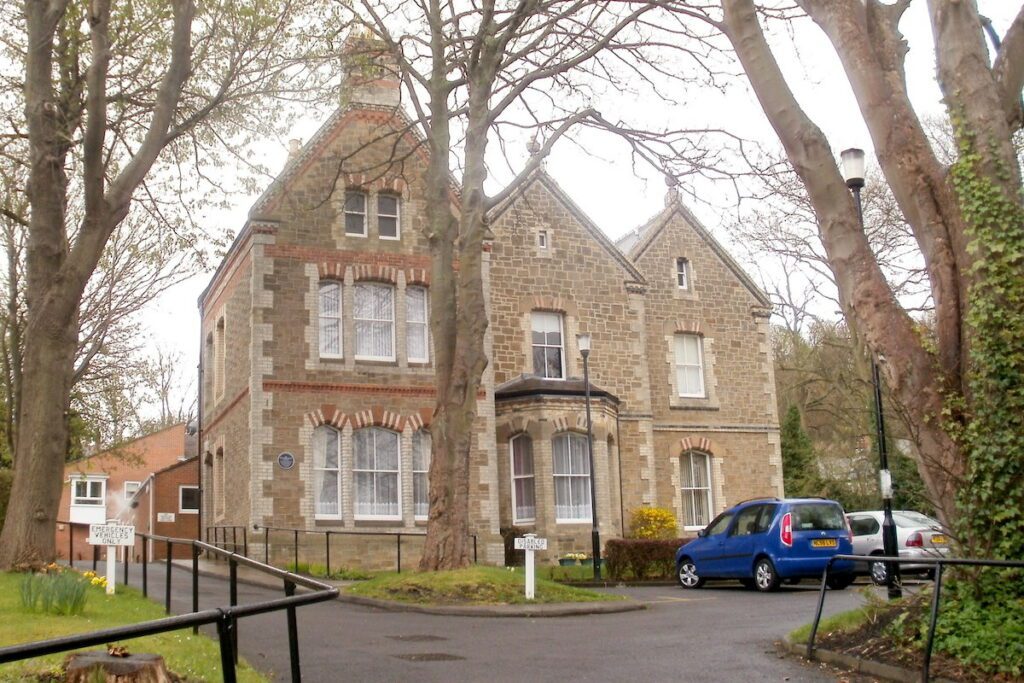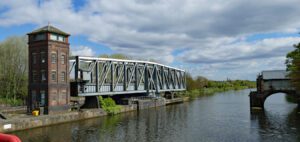Many conveniences we enjoy today can trace their roots to technologies developed during the Industrial Revolution. This period of rapid industrialisation began in Great Britain, where many innovations were pioneered such as new construction materials, manufacturing methods, and lifestyle improvements.
Much of the world’s oldest industrial heritage is located in the UK and so we have curated a list highlighting some of it. We aim to grow this list over time. Is there something we should include in this list? Get in touch and let us know.
The world’s oldest engines
| Title | Name | Engineer | Date | Location | County | Notes |
|---|---|---|---|---|---|---|
| World’s first practical steam engine | Atmospheric Engine (Replica) | Thomas Newcomen | 1986 | Black Country Living Museum, Dudley | West Midlands | The only full size replica of the original engine first used in 1712. |
| World’s oldest surviving modified steam engine | Newcomen Memorial Engine | Thomas Newcomen | <1725 | Dartmouth Visitor Centre | Devon | The engine was modified retaining original parts from 1725. |
| World’s oldest working engine | Smethwick Engine | Boulton & Watt | 1779 | Thinktank, Birmingham | West Midlands | Also the world’s oldest working steam engine. |
| World’s oldest surviving steam locomotive | Puffing Billy | William Hedley | c.1814 | Science Museum | London |
The world’s oldest railway infrastructure
| Title | Name | Engineer | Date | Location | County | Notes |
|---|---|---|---|---|---|---|
| World’s oldest surviving single-arch railway bridge | Causey Arch | Ralph Wood | 1725 | Causey | County Durham | |
| World’s oldest surviving railway viaduct | Laigh Milton Viaduct | William Jessop & Thomas Hollis | 1812 | Kilmarnock | East Ayrshire | |
| World’s oldest working railway viaduct | Bassaleg Viaduct | George Overton | 1826 | Newport | Gwent | |
| World’s oldest continually working railway | Middleton Railway | 1758-Present | Leeds | West Yorkshire | ||
| World’s oldest surviving iron railway bridge | Pont-y-Cafnau | Watkin George | 1793 | Merthyr Tydfil | Merthyr Tydfil County Borough | |
| World’s oldest surviving iron railway bridge to carry a steam locomotive | Gaunless Bridge | George Stephenson | 1823 | Locomotion, Shildon | County Durham | Also the world’s first bridge to use an iron truss. |
| World’s first railway to run a steam locomotive | Merthyr Tramroad | George Overton | 1802-1888 | Merthyr Tydfil | Merthyr Tydfil County Borough | The first experiment with a steam locomotive occurred on the line in 1804. |
| World’s oldest working railway bridge | Skerne Bridge | George Stephenson | 1825 | Darlington | County Durham |
The world’s oldest waterways infrastructure
| Title | Name | Engineer | Date | Location | County | Notes |
|---|---|---|---|---|---|---|
| World’s oldest surviving iron aqueduct | Pont-y-Cafnau | Watkin George | 1793 | Merthyr Tydfil | Merthyr Tydfil County Borough | Carried water via the Cyfartha Leat. |
| World’s oldest surviving navigable iron aqueduct | Longdon-on-Tern Aqueduct | Thomas Telford | 1796 | Longdon-on-Tern | Shropshire | Carried water via the Shrewsbury Canal. |
| World’s oldest working navigable iron aqueduct | Stakes Aqueduct | Benjamin Outram | 1800 | Newport | Gwent | |
| World’s oldest surviving iron railway bridge to carry a steam locomotive | Gaunless Bridge | George Stephenson | 1823 | Locomotion, Shildon | County Durham | Also the world’s first bridge to use an iron truss. |
| World’s first railway to run a steam locomotive | Merthyr Tramroad | George Overton | 1802-1888 | Merthyr Tydfil | Merthyr Tydfil County Borough | The first experiment with a steam locomotive occurred on the line in 1804. |
| World’s oldest working railway bridge | Skerne Bridge | George Stephenson | 1825 | Darlington | County Durham |
The Longdon-on-Tern Aqueduct is the world’s oldest surviving navigable cast iron aqueduct. Completed in 1796 by Thomas Telford, it incorporates part of the original stone aqueduct that washed away during a catastrophic flood. It was constructed to carry the Shrewsbury Canal over the River Tern. The canal closed in 1944 and eventually was demolished; however, the aqueduct survived and offers visitors a unique experience because you can walk in the cast iron trough.
Incidentally, this aqueduct is also the world’s second cast iron aqueduct, opening one month after the Holmes Aqueduct in Derby, which was demolished in 1970 leaving no trace.
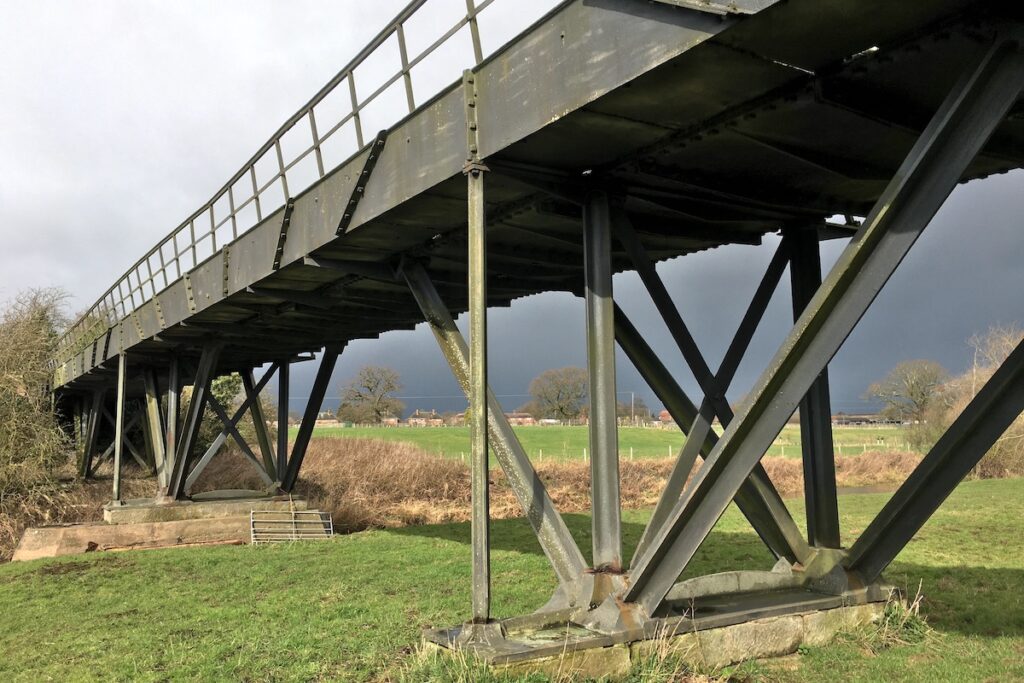
World’s oldest working navigable cast iron aqueduct
The Stalybridge Aqueduct is the world’s oldest working navigable cast iron aqueduct. It was completed in 1800 by Benjamin Outram, who also designed the first cast iron aqueduct in the world. The Stalybridge Aqueduct, also called the Tame Aqueduct, carries the Huddersfield Narrow Canal over the River Tame.
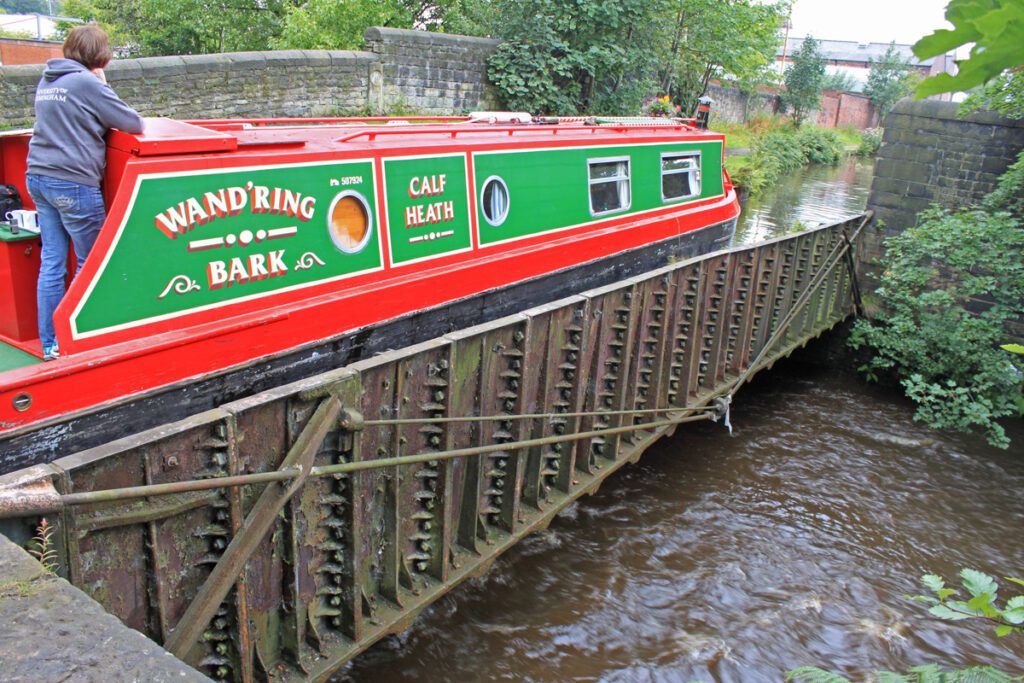
World’s first and only swing aqueduct
The Barton Swing Aqueduct is the world’s first and only swing aqueduct. It was opened in 1894 and designed by Edward Leader Williams. The swing aqueduct carries the Bridgewater Canal over the Manchester Ship Canal.
The Barton Aqueduct, which previously occupied the site, was a traditional arched structure and would have prevented larger vessels from passing through the new ship canal. It was replaced with the swing aqueduct, which continues to operate to this day. Incidentally, the original Barton Aqueduct, constructed by James Brindley in 1761, was the first navigable aqueduct in the UK.
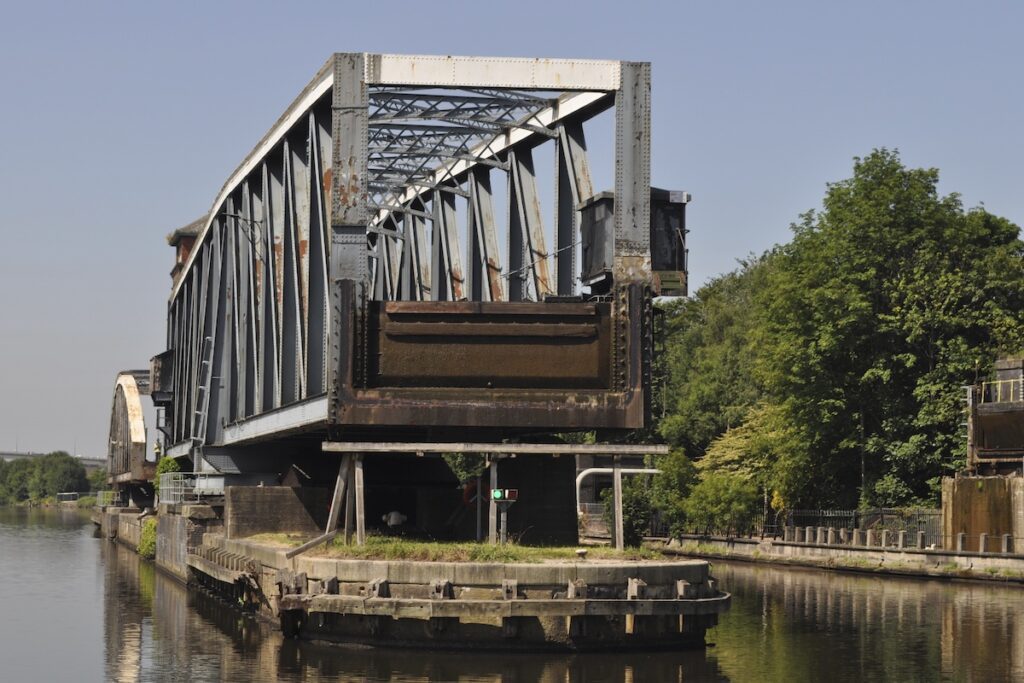
Road
World’s first cast iron road bridge and oldest working cast iron bridge
The eponymous Iron Bridge take the dual title of the world’s first cast iron road bridge and world’s the oldest working cast iron bridge. Completed in 1779 by Abraham Darby III, the bridge is a legacy of his grandfather Abraham Darby I, an early pioneer of iron production using coke. It is incorrectly billed as the world’s first iron bridge; however, earlier records exist of a 72 ft iron footbridge constructed as part of the the landscaper Richard Woods to improve the Kirklees Park estate c.1769. Unfortunately this earlier example no longer exists. Nonetheless, the Iron Bridge is an impressive structure that continues to function as a crossing for pedestrians and cyclists to this day; therefore, it is the world’s oldest working iron bridge.
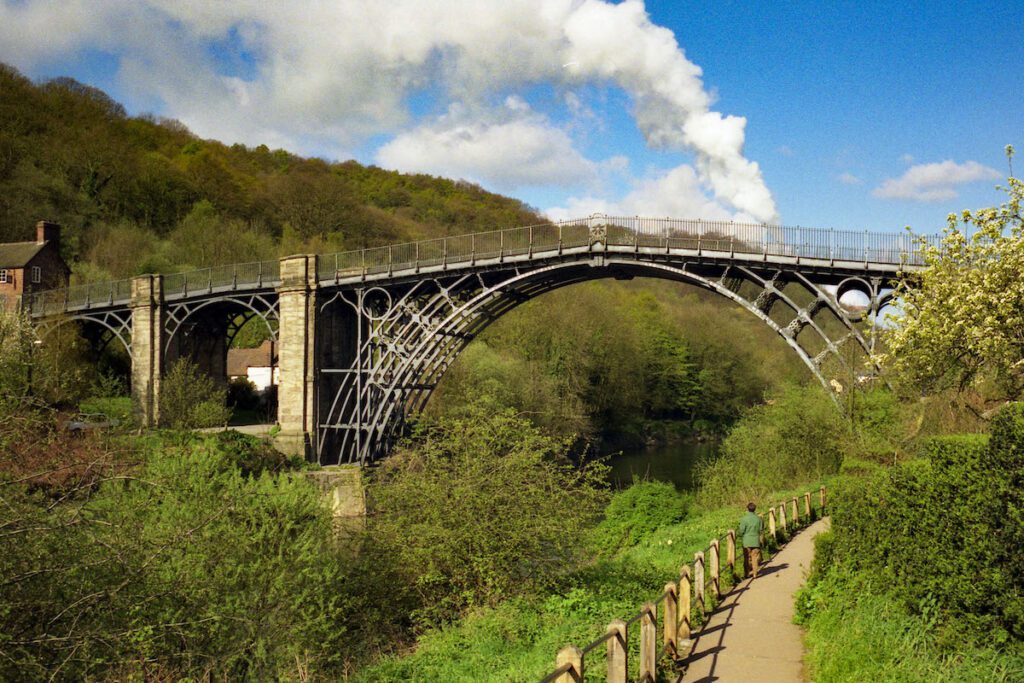
World’s oldest working chain suspension bridge
The Union Chain Bridge is the world’s oldest working chain suspension bridge. It was designed by Captain Samuel Brown and completed in 1820. The bridge links Scotland and England over the River Tweed and it still serves as a crossing for vehicles to this day.
Some sources incorrectly state the Menai Suspension Bridge is the oldest working example. Although work started on the Menai Bridge earlier, the Union Chain Bridge was completed first. It is currently closed for repairs.
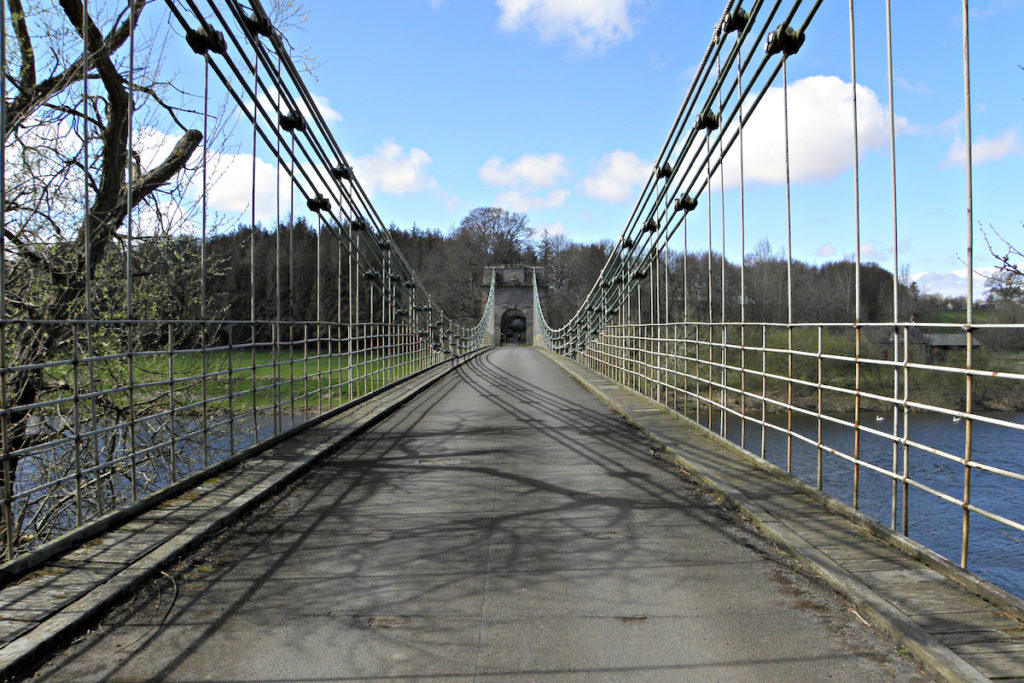
Utility
World’s oldest surviving cast iron aqueduct
Pont-y-Cafnau is the world’s oldest surviving cast iron aqueduct. Located in Merthyr Tydfil, the aqueduct supplied the neighbouring Cyfarthfa Ironworks with water via two leats, one elevated in the air, and the other through a trough underneath the bridge decking. The elevated aqueduct is long gone; however, its trough below deck survives and thus claims this record. The structure is currently closed for repairs.

World’s oldest gasworks remains
Dolphinholme Worsted Mill is home to the world’s oldest gasworks remains. Located in Lancashire, the mill was one of the first to be lit by gas as an experiment in 1811 by Samuel Clegg. Gas lighting saved mill owners the expense of up to 1,500 candles per night. The experiment was successful, and Clegg went on to construct the world’s first public gasworks in Westminster in 1813.
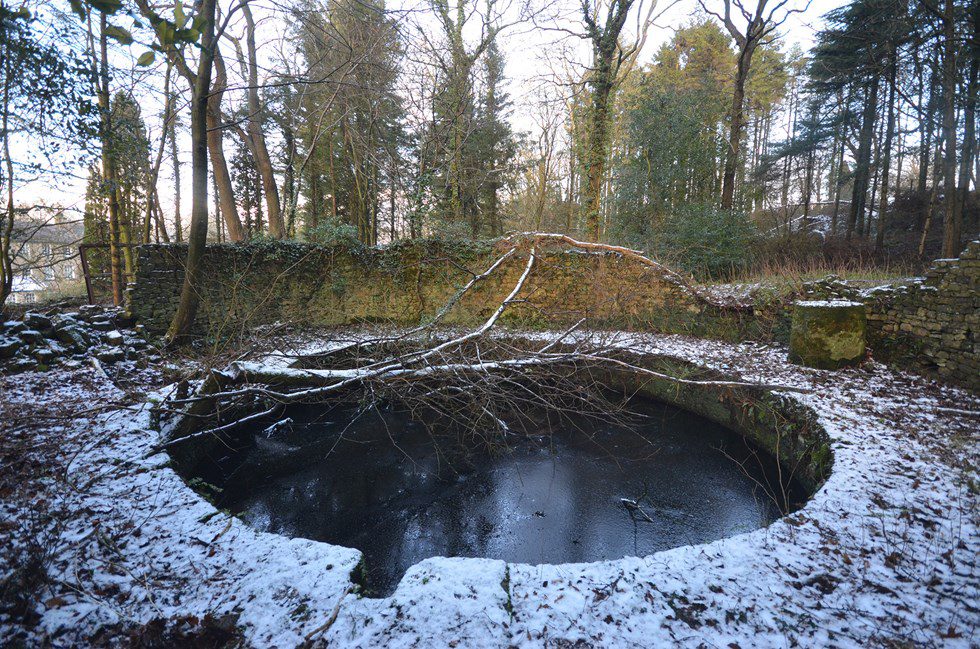
World’s first domestic property that was powered by hydroelectricity
Cragside was the world’s first domestic property that was powered by hydroelectricity. Located in Northumberland, it was the home of inventor William Armstrong, an arms manufacturer, and a pioneer of modern home gadgetry. In 1878, Armstrong installed a Siemens dynamo connected to a Vortex turbine, which was powered by water falling from lakes in the hills above the house. This system powered an Arc Lamp, which was then replaced in 1880 by an incandescent light bulb by Joseph Swan. Cragside is now owned by the National Trust and open to visitors.
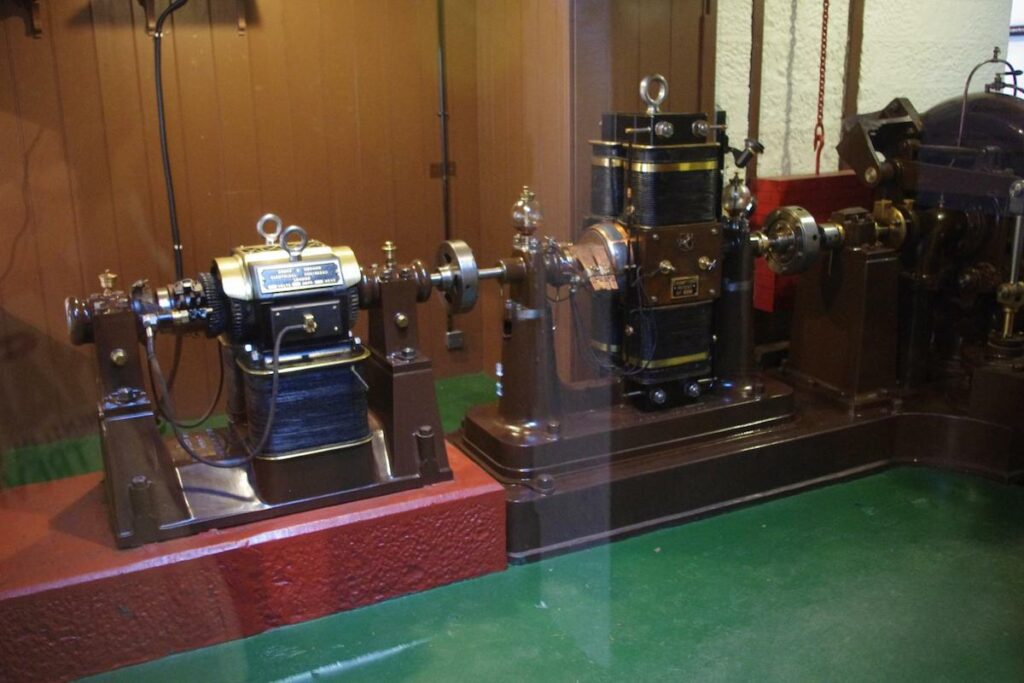
World’s first domestic property that was lit by the incandescent electric light bulb
Underhill in Gateshead is the world’s first domestic property that was lit by the incandescent electric light bulb. It was the home of Joseph Swan, inventor of the bulb, which he had been developing for some thirty years. By 1880, Swan had patented his creation and began installing light bulbs starting with his own home. Unfortunately, Underhill is not open to the public; however, its legacy is marked by a blue plaque.
